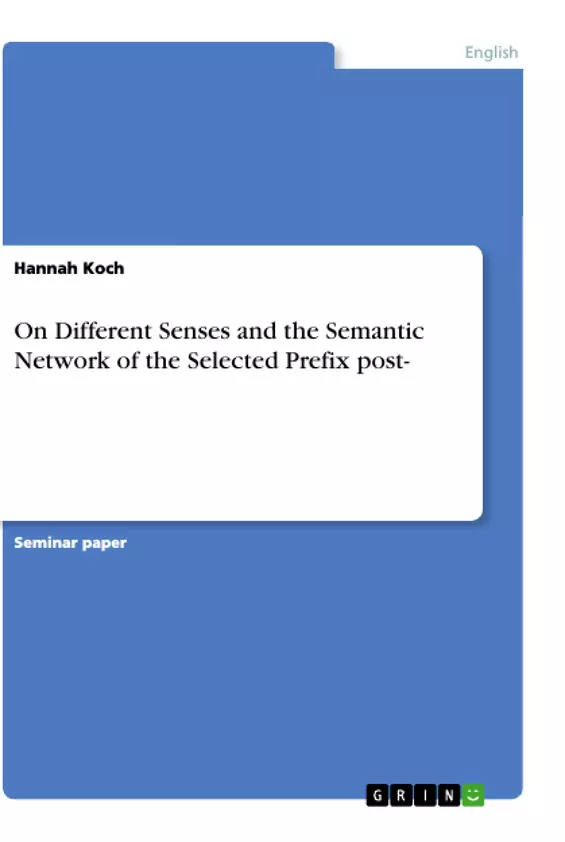In order to figure out multiple senses and the specific semantic network of the target prefix post-, this study will employ an approach combining the field of cognitive and synchronic corpus linguistics.
Chapter two will start by defining the word-formation pattern of prefixation and chapter three continues to explain Hans-Jörg Schmid’s approach to Cognitive Linguistics and how they apply to this study. Chapter four will provide information about corpus linguistics, and concludes by depicting the history of the British National Corpus, which was chosen for data sampling as it provides the original source category as well as the tokens. The following chapter five will list the limitations and define the importance of this study. In chapter six, the analysis will be conducted. It will be structured into subchapters, according to the different text categories which are given in the BNC, and conclude with a comparison of the results in order to find out if the prefix displays any varying meanings and if so how they are depicted.
A final outlook will be given in the last chapter, adding possible subsequent ideas on how this study could be continued.
Inhaltsverzeichnis (Table of Contents)
- Introduction
- Prefixation
- General Information
- Types of Prefixation
- Synthetic Prefixation
- Pseudo Prefixation
- Cognitive Functions of Prefixation
- Cognitive Linguistics and Prefixation
- Conceptualisation and the Mental Lexicon
- Contrast and Opposition
- Entrenchment and Cognitive Units
- Corpus Linguistics
- History of Corpus Linguistics
- Types of Corpora
- Qualitative and Quantitative Approaches
- The British National Corpus
- Relevance and Limitations of this Study
Zielsetzung und Themenschwerpunkte (Objectives and Key Themes)
This study aims to investigate the semantic network of the prefix post- through the lens of cognitive and synchronic corpus linguistics. It analyzes the occurrences of the prefix in the British National Corpus (BNC) to explore its various meanings and their representation in different text categories.
- Prefixation as a word-formation pattern and its cognitive functions.
- The application of cognitive linguistics to analyze the meaning of prefixes.
- Corpus linguistics and the use of the BNC as a data source for linguistic research.
- The semantic variation and usage of the prefix post- across different text categories.
- The relevance and limitations of this study in understanding the usage and meaning of prefixes.
Zusammenfassung der Kapitel (Chapter Summaries)
The introduction outlines the study's approach and its structure, highlighting the use of cognitive and corpus linguistics to explore the semantic network of the prefix post-. Chapter 2 defines prefixation and its various types, including synthetic and pseudo-prefixation. Chapter 3 delves into the cognitive functions of prefixation, explaining Schmid's approach to cognitive linguistics and its connection to the mental lexicon.
Chapter 4 introduces corpus linguistics and the history of corpus development, particularly focusing on the British National Corpus (BNC). The chapter discusses the BNC's design, development, and accessibility, emphasizing its importance for linguistic research. Chapter 5 outlines the relevance and limitations of the study, emphasizing the focus on British English and the potential for future research.
Schlüsselwörter (Keywords)
This study centers around the keywords: prefixation, cognitive linguistics, corpus linguistics, British National Corpus (BNC), semantic network, prefix post-, meaning, and usage.
- Quote paper
- Hannah Koch (Author), 2018, On Different Senses and the Semantic Network of the Selected Prefix post-, Munich, GRIN Verlag, https://www.grin.com/document/1027141



